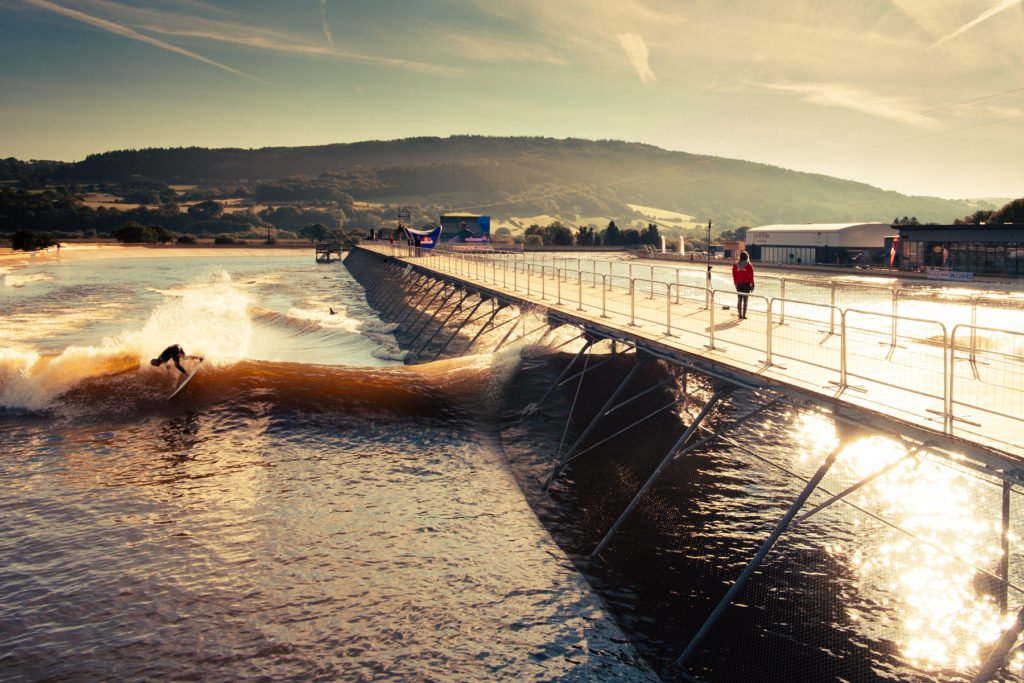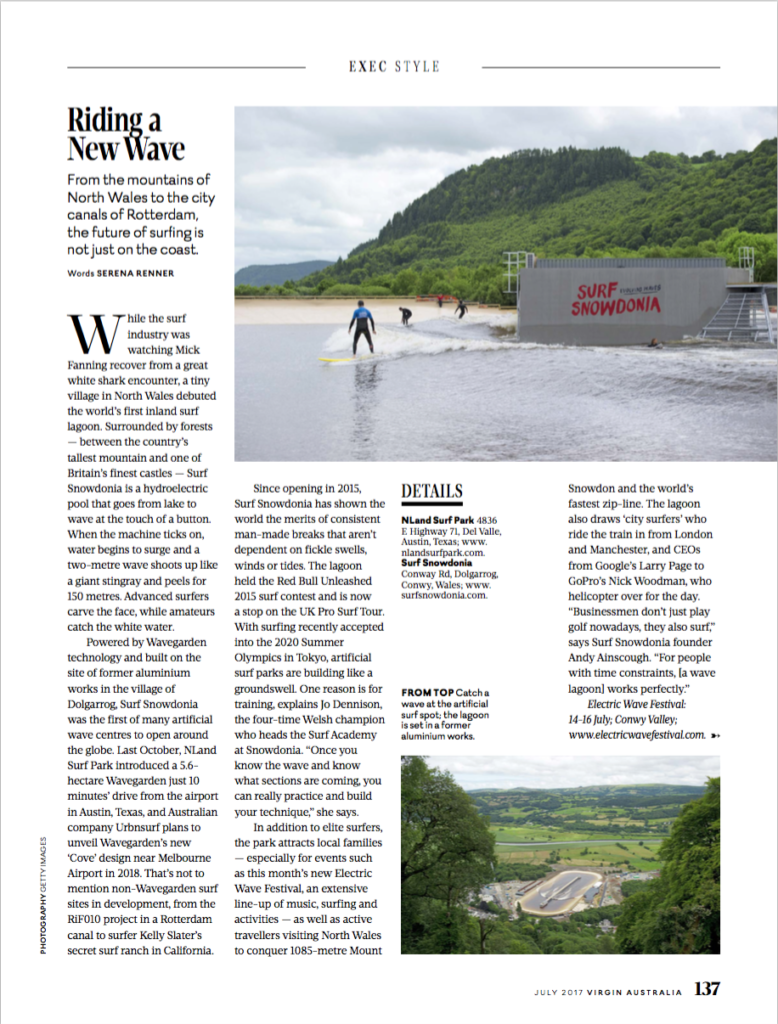
While the surf industry was watching Mick Fanning recover from a great white shark encounter, a tiny village in North Wales debuted the world’s first inland surf lagoon. Surrounded by forests — between the country’s tallest mountain and one of Britain’s finest castles — Surf Snowdonia is a hydroelectric pool that goes from lake to wave at the touch of a button. When the machine ticks on, water begins to surge and a two-metre wave shoots up like a giant stingray and peels for 150 metres. Advanced surfers carve the face, while amateurs catch the white water.
Powered by Wavegarden technology and built on the site of former aluminium works in the village of Dolgarrog, Surf Snowdonia was the first of many artificial wave centres to open around the globe. Last October, NLand Surf Park introduced a 5.6- hectare Wavegarden just 10 minutes’ drive from the airport in Austin, Texas, and Australian company Urbnsurf plans to unveil Wavegarden’s new ‘Cove’ design near Melbourne Airport in 2018. That’s not to mention non-Wavegarden surf sites in development, from the RiF010 project in a Rotterdam canal to surfer Kelly Slater’s secret surf ranch in California.
Since opening in 2015, Surf Snowdonia has shown the world the merits of consistent man-made breaks that aren’t dependent on fickle swells, winds or tides. The lagoon held the Red Bull Unleashed 2015 surf contest and is now a stop on the UK Pro Surf Tour. With surfing recently accepted into the 2020 Summer Olympics in Tokyo, artificial surf parks are building like a groundswell. One reason is for training, explains Jo Dennison, the four-time Welsh champion who heads the Surf Academy at Snowdonia. “Once you know the wave and know what sections are coming, you can really practice and build your technique,” she says.
In addition to elite surfers, the park attracts local families — especially for events such as this month’s new Electric Wave Festival, an extensive line-up of music, surfing and activities — as well as active travellers visiting North Wales to conquer 1085-metre Mount Snowdon and the world’s fastest zip-line. The lagoon also draws ‘city surfers’ who ride the train in from London and Manchester, and CEOs from Google’s Larry Page to GoPro’s Nick Woodman, who helicopter over for the day. “Businessmen don’t just play golf nowadays, they also surf,” says Surf Snowdonia founder Andy Ainscough. “For people with time constraints, [a wave lagoon] works perfectly.”
(Published in the July 2017 issue of Voyeur)
